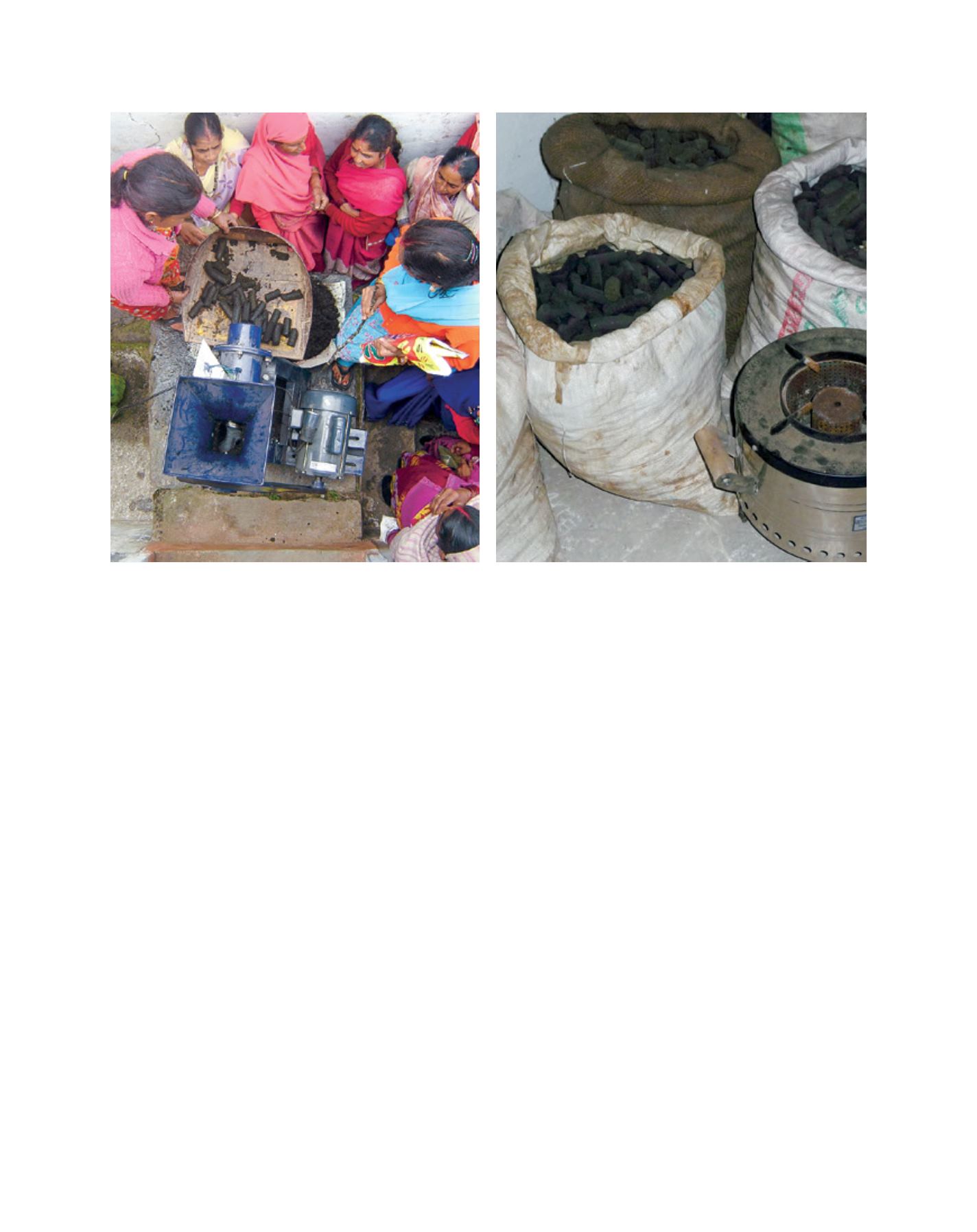

[
] 104
tunities were further enhanced through support to Farmer
Interest Groups (FIGs) as a means of increasing access to
production and marketing services. The FIGs now operate as
a federation, with technical support provided through a CSO
known as the Central Himalayan Environment Association.
The project also engaged scientific institutions to address
specific needs for knowledge-generation, monitoring and
assessment of interventions, and quantification of environ-
ment and development benefits. A key example is the Energy
and Resource Institute (TERI), which served as a partner for
baseline and final impact assessment for the project. TERI
was involved in developing a sampling framework, designing
questionnaires, field testing, pilot surveys, refining question-
naires, field surveys, data cleaning and entry and, finally, data
compilation and aggregation.
As part of internal monitoring, the progress of the annual
works programme was monitored on a monthly basis through
a Monthly Progress Report generated at the divisional level and
consolidated at WMD level. Monitoring teams were consti-
tuted with members drawn from various technical wings of
the directorate who regularly visited the project area. Random
field visits, monthly meetings, checklists, brainstorming, amid
all stakeholders at district level at monthly intervals and at
regional level on a half-yearly basis, was an integral part of the
internal monitoring. At the district level there was a District
Level Governing Committee for monitoring and supervision
of the project and at the state level there was a State Steering
Committee with representatives from concerned line depart-
ments and non-governmental organizations (NGOs). The
State Steering Committee reviewed the project progress at
half-yearly and annual intervals, and periodic field visits were
undertaken by senior government and project officers.
Participatory monitoring and evaluation with community
members was introduced to ensure stakeholder participation,
with full involvement of GP-level teams, which include repre-
sentatives from all stakeholder groups at GP level. The project
placed special emphasis on ‘social auditing’, which ensured
transparency, accountability and openness with full involve-
ment of the communities. In keeping with these principles
there was widespread disclosure of information through wall
writings, awareness-generation campaigns, radio programmes
and publications. Finally, the use of information technology
(IT) was an integral part of the project from formulation, plan-
ning and database management to monitoring of the project’s
physical and financial progress and impact assessments.
Management information system software was developed as
an endeavour to use IT for management of information.
The global environment benefits (GEBs) of SLEM in
Uttarakhand are largely associated with the following inter-
ventions at watershed, sub-watershed and micro-watershed
scale: improving soil and water conservation, reducing erosion
and siltation, sustainable use of forest resources (non-timber
forest products), and introducing alternative energy sources.
The GEBs from the interventions include forest protection
(contributing to biodiversity conservation and sustainable
flow of water resources), improvements in soil carbon and
reductions in greenhouse gas emissions from deforestation.
The participatory approach for planning and implementation
of interventions with communities ensures that GEBs are
generated in the context of addressing drivers of degradation.
Pine briquetting reduces dependency on fuelwood collection by women as well as reducing deforestation and greenhouse gas emissions
Images: Patrizia Cocca/GEF
L
iving
L
and
















